I can solder… and I do solder when I need to… However, I’m not the most confident/skilled at it… So, in a lot of my projects, I setup the electronics entirely on a breadboard. See this picture of my original MobBob built… all electronic done on a tiny breadboard.
However, using a breadboard is not just for the solder-phobic! It can be a useful technique for building robots, so I wanted to share some of the tricks I use for doing robot electronics on a breadboard!
(For anyone new robot builders who are making MobBob, using a breadboard could be a good way to get MobBob up and running quickly. Breadboarding is quick and easy. Also, you can always solder the connections later once you’re sure everything is working.)
While I 100% agree soldering is a skill everyone should have (and that I need to continue to improve at), soldering can be intimidating for new robot builders. E.g. poor soldering technique may create bad connections, connect points that shouldn’t be connected, or in the worst case, overheat (and kill) components/parts.
Besides avoiding the soldering iron… using a breadboard has other advantages. For example:
- You may want to test your connections out before you finalise things by cutting wires and soldering everything.
- You may want to be able to easily disconnect parts and reuse them in new projects. (This saves you money if you are still experimenting/learning, and also using regular components like this will be cheaper than buying a robotics kits with “special” components that you can “snap together”.
So enough evangelising about breadboards… here are some tips!
Tip #1 – Get a mix of different jumpers!
Besides different lengths, you will also want some with different genders.
A lot of “Arduino Starter” kits come with male-to-male jumpers (the ones on the right in the picture), but it is also useful to have male-to-female (middle ones), and female-to-female (ones on the left).
You can order packs of each kind fairly cheaper online. (I get mine from Chinese sites or ebay.)
The “female” connectors are very useful!! With those, you can wire up sensors and other parts very easily.
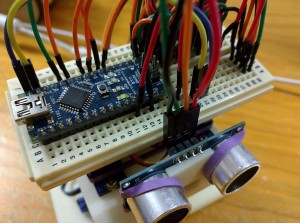
Connecting to an ultrasonic sensor.
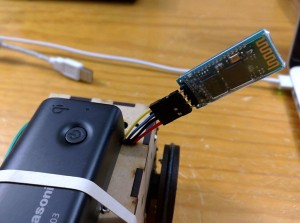
Connecting to a bluetooth module.
(BTW, these can also be used for connecting to Raspberry Pi GPIO pins! 😀 )
Tip #2 – Connecting to Servos
When I first started making robots… I wasn’t sure how I could connect servos to my microcontroller… Do I need to cut the wires and solder them? Do I need to find special connectors to connect to the servo wires?
Soldering is the safest… but for making a test connection (or even more permanent connection… :P) quickly, jumper wires again come to the rescue.
See this close up of the OneServoWalker. I just plug a “male” jumper wire pin straight into the servo connector, and the other end of the wire into the breadboard. There! Servo connected!
I’ve also used another technique… but I don’t like it as much. You can also use connectors like these.
These are probably the perfect thing for soldering a servo connector permanently onto a PCB. I got these from my local electronics store.
I’ve found that these can be used on a breadboard too.
This makes things a bit tidier on a breadboard! But I think using a jumper wire directly makes a more secure connection.
Tip #3 Powering Your Robot
In a lot of my projects, I use Arduino microcontrollers that run on 5V. Also, I often use micro-servos that also run fine on 5V.
Because I’m lazy, I’ve started using mobile phone booster batteries to power my projects. These have in-built voltage regulators to give you 5V, and they often deliver pretty steady current!
Also, they can be charged using a USB port, so it means you can just plug your robot in to recharge and don’t need to take out the batteries.
Also, they can often be obtained fairly cheaply (especially if you look out for discounts). The cost can end up being lower than buying regular rechargeable batteries!
And often, these batteries are smaller than using regular AA batteries! (And compared to other smaller options such as using LiPos… these batteries are safer to use and easier to recharge.)
I’m a huge fan of using these… 😛
Some examples of where I’ve used them…
To make it easy to connect these to a breadboard, I usually custom make a little cable that has a USB plug on one end and 2 breadboard pins on the other end.
To make this, I buy a cheap USB recharge cable (~$1.50), and then cut the end off, and solder on the pins.
Having one of these makes it easy for you to power your projects! These batteries have worked really reliably and easily for me!!
Conclusion
That’s all for now! I hope some of these tips were useful! They are probably pretty obvious!! 😛
However, I didn’t know these when I started and it took me a little while to figure it out for myself, so I thought I’d share in case these were useful to someone else who’s starting to make robots!
Have fun!

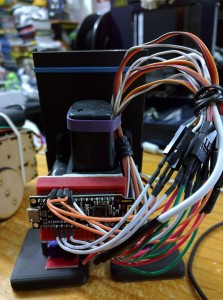
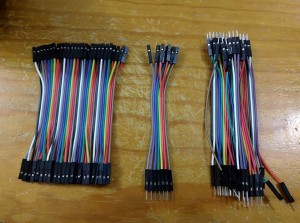
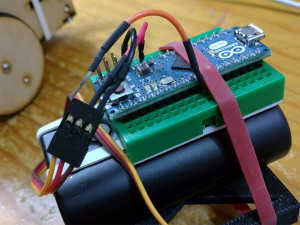
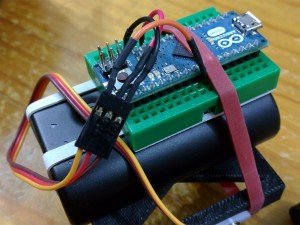
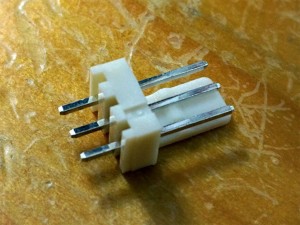
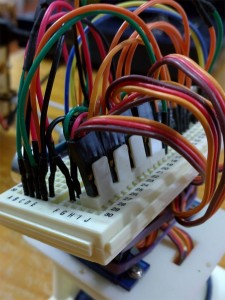
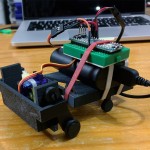
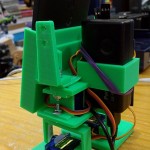
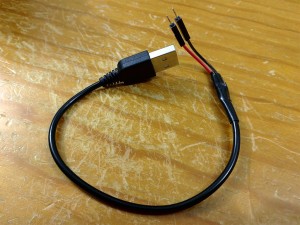
Thank-you for sharing awesome stuff for sure, i just got my 1st 3d printer in june 2015 now i have purchased my first arduino un r3 I am retired and really enjoying all this new learning curve. I appreciate the good folks like yourself that take the time to share their knowledge to help others really awesome.
Wally
Hi Wally,
Thanks for the kind words! 😀
That’s fantastic news. My first Arduino was a Uno as well. 😀 I hope you have lots of fun with it!!
I think 3D printing and microcontrollers combine together to make fun and amazing things.
Kevin